Disparities Dashboard
Indicator Gauge Icon Legend
Legend Colors
Red is bad, green is good, blue is not statistically different/neutral.
Compared to Distribution
 the value is in the best half of communities.
the value is in the best half of communities.
 the value is in the 2nd worst quarter of communities.
the value is in the 2nd worst quarter of communities.
 the value is in the worst quarter of communities.
the value is in the worst quarter of communities.
Compared to Target
 meets target;
meets target;  does not meet target.
does not meet target.
Compared to a Single Value
 lower than the comparison value;
lower than the comparison value;
 higher than the comparison value;
higher than the comparison value;
 not statistically different from comparison value.
not statistically different from comparison value.
Trend

 non-significant change over time;
non-significant change over time; 
 significant change over time;
significant change over time;  no change over time.
no change over time.
Compared to Prior Value
 higher than the previous measurement period;
higher than the previous measurement period;
 lower than the previous measurement period;
lower than the previous measurement period;
 no statistically different change from previous measurement period.
no statistically different change from previous measurement period.
 Significantly better than the overall value
Significantly better than the overall value
 Significantly worse than the overall value
Significantly worse than the overall value
 Significantly different than the overall value
Significantly different than the overall value
 No significant difference with the overall value
No significant difference with the overall value
 No data on significance available
No data on significance available
State: Kansas
Health / Cancer
State: Kansas Cancer: Medicare Population
State: Kansas Cancer: Medicare Population
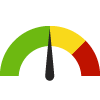



State: Kansas Colorectal Cancer Rate
State: Kansas Colorectal Cancer Rate


State: Kansas Female Breast Cancer Rate
State: Kansas Female Breast Cancer Rate


State: Kansas Lung & Bronchus Cancer Rate
State: Kansas Lung & Bronchus Cancer Rate


State: Kansas Male Prostate Cancer Rate
State: Kansas Male Prostate Cancer Rate


State: Kansas Mammography Screening: Medicare Population
State: Kansas Mammography Screening: Medicare Population
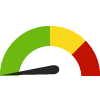



State: Kansas
Health / Diabetes
State: Kansas Diabetes Hospital Admission Rate
State: Kansas Diabetes Hospital Admission Rate

State: Kansas Diabetes: Medicare Population
State: Kansas Diabetes: Medicare Population




State: Kansas
Health / Disabilities
State: Kansas Children with a Disability
State: Kansas Children with a Disability


State: Kansas Persons with a Cognitive Difficulty
State: Kansas Persons with a Cognitive Difficulty


State: Kansas Persons with a Disability
State: Kansas Persons with a Disability


State: Kansas Persons with a Hearing Difficulty
State: Kansas Persons with a Hearing Difficulty


State: Kansas Persons with a Self-Care Difficulty
State: Kansas Persons with a Self-Care Difficulty


State: Kansas Persons with a Vision Difficulty
State: Kansas Persons with a Vision Difficulty


State: Kansas Persons with an Ambulatory Difficulty
State: Kansas Persons with an Ambulatory Difficulty


State: Kansas
Health / Health Care Access & Quality
State: Kansas Community Spending on Health Care
State: Kansas Community Spending on Health Care


State: Kansas Health Insurance Spending-to-Income Ratio
State: Kansas Health Insurance Spending-to-Income Ratio


State: Kansas Persons with Health Insurance
State: Kansas Persons with Health Insurance
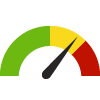



State: Kansas Persons with Private Health Insurance Only
State: Kansas Persons with Private Health Insurance Only



State: Kansas Persons with Public Health Insurance Only
State: Kansas Persons with Public Health Insurance Only



State: Kansas Preventable Hospital Stays: Medicare Population
State: Kansas Preventable Hospital Stays: Medicare Population
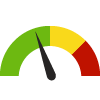



State: Kansas
Health / Health Information Technology
State: Kansas Persons with an Internet Subscription
State: Kansas Persons with an Internet Subscription



State: Kansas
Health / Heart Disease & Stroke

State: Kansas Age-Adjusted Death Rate due to Heart Attack
State: Kansas Age-Adjusted Death Rate due to Heart Attack


State: Kansas Atrial Fibrillation: Medicare Population
State: Kansas Atrial Fibrillation: Medicare Population




State: Kansas Congestive Heart Failure Hospital Admission Rate
State: Kansas Congestive Heart Failure Hospital Admission Rate

State: Kansas Heart Disease Hospital Admission Rate
State: Kansas Heart Disease Hospital Admission Rate

State: Kansas Heart Failure: Medicare Population
State: Kansas Heart Failure: Medicare Population




State: Kansas Hyperlipidemia: Medicare Population
State: Kansas Hyperlipidemia: Medicare Population




State: Kansas Hypertension: Medicare Population
State: Kansas Hypertension: Medicare Population




State: Kansas Ischemic Heart Disease: Medicare Population
State: Kansas Ischemic Heart Disease: Medicare Population




State: Kansas Stroke: Medicare Population
State: Kansas Stroke: Medicare Population




State: Kansas
Health / Immunizations & Infectious Diseases
State: Kansas Flu Vaccinations: Medicare Population
State: Kansas Flu Vaccinations: Medicare Population




State: Kansas Pneumonia Vaccinations: Medicare Population
State: Kansas Pneumonia Vaccinations: Medicare Population
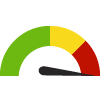



State: Kansas
Health / Medications & Prescriptions
State: Kansas Poisoning (Drugs) Hospital Admission Rate
State: Kansas Poisoning (Drugs) Hospital Admission Rate

State: Kansas
Health / Mental Health & Mental Disorders
State: Kansas Depression: Medicare Population
State: Kansas Depression: Medicare Population




State: Kansas Mental Behavior Hospital Admissions Rate
State: Kansas Mental Behavior Hospital Admissions Rate

State: Kansas
Health / Mortality Data
























State: Kansas Age-adjusted Mortality Rate per 100,000 population
State: Kansas Age-adjusted Mortality Rate per 100,000 population


















State: Kansas Age-Adjusted Years of Potential Life Lost - Alzheimers
State: Kansas Age-Adjusted Years of Potential Life Lost - Alzheimers


State: Kansas Age-Adjusted Years of Potential Life Lost - Cancer
State: Kansas Age-Adjusted Years of Potential Life Lost - Cancer






State: Kansas Age-Adjusted Years of Potential Life Lost - Diabetes
State: Kansas Age-Adjusted Years of Potential Life Lost - Diabetes




State: Kansas Age-Adjusted Years of Potential Life Lost - Homicide
State: Kansas Age-Adjusted Years of Potential Life Lost - Homicide




State: Kansas Age-Adjusted Years of Potential Life Lost - Suicide
State: Kansas Age-Adjusted Years of Potential Life Lost - Suicide






State: Kansas
Health / Older Adults
State: Kansas Adult Day Care Spending-to-Income Ratio
State: Kansas Adult Day Care Spending-to-Income Ratio


State: Kansas Adults 65+ with a Disability
State: Kansas Adults 65+ with a Disability


State: Kansas Adults 65+ with a Hearing Difficulty
State: Kansas Adults 65+ with a Hearing Difficulty


State: Kansas Adults 65+ with a Self-Care Difficulty
State: Kansas Adults 65+ with a Self-Care Difficulty


State: Kansas Adults 65+ with a Vision Difficulty
State: Kansas Adults 65+ with a Vision Difficulty


State: Kansas Adults 65+ with an Independent Living Difficulty
State: Kansas Adults 65+ with an Independent Living Difficulty


State: Kansas Alzheimer's Disease or Dementia: Medicare Population
State: Kansas Alzheimer's Disease or Dementia: Medicare Population




State: Kansas
Health / Other Conditions
State: Kansas Chronic Kidney Disease: Medicare Population
State: Kansas Chronic Kidney Disease: Medicare Population




State: Kansas Osteoporosis: Medicare Population
State: Kansas Osteoporosis: Medicare Population








State: Kansas
Health / Prevention & Safety
State: Kansas Age-Adjusted Death Rate due to Firearms
State: Kansas Age-Adjusted Death Rate due to Firearms





State: Kansas Injury Hospital Admission Rate
State: Kansas Injury Hospital Admission Rate

State: Kansas
Health / Respiratory Diseases
State: Kansas Asthma Hospital Admission Rate
State: Kansas Asthma Hospital Admission Rate

State: Kansas Asthma: Medicare Population
State: Kansas Asthma: Medicare Population





State: Kansas COPD: Medicare Population
State: Kansas COPD: Medicare Population




State: Kansas Pneumonia (Bacterial) Hospital Admission Rate
State: Kansas Pneumonia (Bacterial) Hospital Admission Rate

State: Kansas
Health / Tobacco Use
State: Kansas Cigarette Spending-to-Income Ratio
State: Kansas Cigarette Spending-to-Income Ratio


State: Kansas
Community / Crime & Crime Prevention
State: Kansas Age-Adjusted Death Rate due to Homicide
State: Kansas Age-Adjusted Death Rate due to Homicide





State: Kansas
Community / Demographics
State: Kansas Foreign Born Persons
State: Kansas Foreign Born Persons


State: Kansas Ratio of Children to Adults
State: Kansas Ratio of Children to Adults



State: Kansas Ratio of Elderly Persons and Children to Adults
State: Kansas Ratio of Elderly Persons and Children to Adults



State: Kansas Ratio of Elderly Persons to Adults
State: Kansas Ratio of Elderly Persons to Adults



State: Kansas Total Population
State: Kansas Total Population


State: Kansas Veteran Population
State: Kansas Veteran Population


State: Kansas
Community / Transportation
State: Kansas Community Spending on Transportation
State: Kansas Community Spending on Transportation


State: Kansas Gasoline and Other Fuels Spending-to-Income Ratio
State: Kansas Gasoline and Other Fuels Spending-to-Income Ratio


State: Kansas Households without a Vehicle
State: Kansas Households without a Vehicle



State: Kansas Mean Travel Time to Work
State: Kansas Mean Travel Time to Work



State: Kansas Workers Commuting by Public Transportation
State: Kansas Workers Commuting by Public Transportation
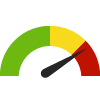



State: Kansas Workers who Drive Alone to Work
State: Kansas Workers who Drive Alone to Work



State: Kansas Workers who Walk to Work
State: Kansas Workers who Walk to Work



State: Kansas
Economy / Food Insecurity
State: Kansas Community Spending on Food
State: Kansas Community Spending on Food


State: Kansas
Economy / Housing & Homes
State: Kansas Community Spending on Housing
State: Kansas Community Spending on Housing


State: Kansas Home Renter Spending-to-Income Ratio
State: Kansas Home Renter Spending-to-Income Ratio


State: Kansas Homeowner Spending-to-Income Ratio
State: Kansas Homeowner Spending-to-Income Ratio


State: Kansas Overcrowded Households
State: Kansas Overcrowded Households


State: Kansas Renters Spending 30% or More of Household Income on Rent
State: Kansas Renters Spending 30% or More of Household Income on Rent




State: Kansas Utilities Spending-to-Income Ratio
State: Kansas Utilities Spending-to-Income Ratio


State: Kansas
Economy / Income
State: Kansas Median Household Income
State: Kansas Median Household Income



State: Kansas Per Capita Income
State: Kansas Per Capita Income



State: Kansas
Economy / Poverty
State: Kansas Children Living Below Poverty Level
State: Kansas Children Living Below Poverty Level



State: Kansas Families Living Below Poverty Level
State: Kansas Families Living Below Poverty Level



State: Kansas People 65+ Living Below Poverty Level
State: Kansas People 65+ Living Below Poverty Level
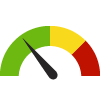


State: Kansas People 65+ Living Below Poverty Level (Count)
State: Kansas People 65+ Living Below Poverty Level (Count)

State: Kansas People Living Below Poverty Level
State: Kansas People Living Below Poverty Level




State: Kansas Young Children Living Below Poverty Level
State: Kansas Young Children Living Below Poverty Level



State: Kansas Youth not in School or Working
State: Kansas Youth not in School or Working



State: Kansas
Education / Childcare & Early Childhood Education
State: Kansas Day Care Center and Preschool Spending-to-Income Ratio
State: Kansas Day Care Center and Preschool Spending-to-Income Ratio


State: Kansas Home Child Care Spending-to-Income Ratio
State: Kansas Home Child Care Spending-to-Income Ratio


State: Kansas
Education / Educational Attainment
State: Kansas College Tuition Spending-to-Income Ratio
State: Kansas College Tuition Spending-to-Income Ratio


State: Kansas Community Spending on Education
State: Kansas Community Spending on Education


State: Kansas People 25+ with a Bachelor's Degree or Higher
State: Kansas People 25+ with a Bachelor's Degree or Higher



State: Kansas People 25+ with a High School Diploma or Higher
State: Kansas People 25+ with a High School Diploma or Higher



State: Kansas Student Loan Spending-to-Income Ratio
State: Kansas Student Loan Spending-to-Income Ratio




State: Kansas
Education / Student Performance K-12
State: Kansas 4th Grade Students Proficient in English/Language Arts
State: Kansas 4th Grade Students Proficient in English/Language Arts


State: Kansas 4th Grade Students Proficient in Math
State: Kansas 4th Grade Students Proficient in Math


State: Kansas 8th Grade Students Proficient in English/Language Arts
State: Kansas 8th Grade Students Proficient in English/Language Arts


State: Kansas 8th Grade Students Proficient in Math
State: Kansas 8th Grade Students Proficient in Math


State: Kansas
Environmental Health / Built Environment
State: Kansas Access to Parks
State: Kansas Access to Parks


